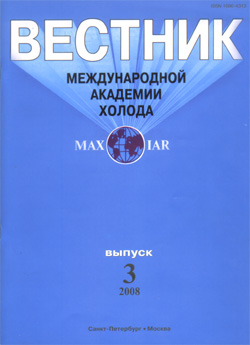
Influence of deep freezing on cellular structure of the human red blood cells

Annotation
Atomic force microscopy (AFM) technique was used for assessment of structural changes in red blood cells (RBCs) subjected to cryopreservation with 40% glycerol. This freezing regimen has been shown to exert some controversial effects upon RBCs structure in final cell concentrates. According to AFM scanning of RBCs suspensions, two subpopulations of the cells could be revealed. One of them represents glycerol-absorbing cells, whereas second subpopulation seems to exhibit glycerol-free cell surfaces. The glycerol-absorbing RBCs are subject to picnotic transformation, being compressed, mainly, at their short axis and disk height. By contrary, RBCs with relatively clean surface have an increased volume, with their linear dimensions exceeding control values. Glycerol is adsorbed at the cell surface as discrete particles of up to 1,5 microns in size. The particles are assembled into typical branched structures which are detectable both at RBCs surfaces, as well as at substrate layer. Some RBCs strongly adsorb and entrap glycerol at the surface of their cytoplasmatic membranes. Following a routine technological washing, the RBCs, while being devoid of glycerol, seem to open their membranes pores, thus accelerating transmembrane exchange and promoting their functional recovery (endocellular hypostasis). Hence, application of high glycerol concentrations for cryopreservation requires an optimised washing technology to obtain glycerol-free suspensions of red blood cells.
Keywords
Постоянный URL
Articles in current issue
- The 21th General Annual Meeting of the International Academy of Refrigeration
- Results of the IAR’s work in 2013–2014 (Report of the IAR President at the 21th General Annual Meeting on 23 April 2014)
- The boiling of the R600a/mineral oil ISO VG 15 solution in smooth tube
- Air distribution system in refrigeration chamber with air turbo refrigeration machine
- The system approach to an assessment of states of uncertainty. Problems of implementation for monitoring and control tasks
- The influence of the operational inflows of moisture on the thermo-hydro processes in the storage chambers of frozen food stuffs
- Calculation of hydrodynamics for spray tower with porous packing
- Main peculiarities of carbon dioxide solid phase formation
- The second virial coefficient for refrigerant R41
- Active peptides of fish scale in gainers for sports nutrition
- Cooling of fish with snowlike carbon dioxide
- Research of change dynamics of quality indicators of functional products at refrigerating storage in adverse conditions
- Thioldisulfid balance in baker’s yeast
- Development of new whey drink with fruit–berry filling
- Structure-mechanical characteristics of non-yeast sponge cake on base of full fat flax flour
